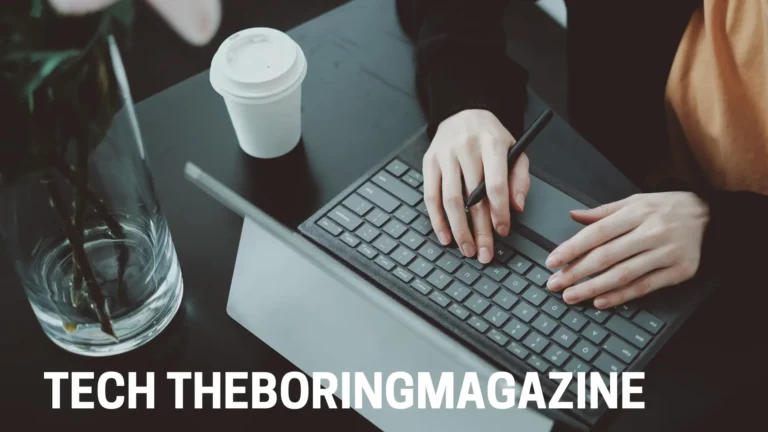
Lillienu: A New Dawn in Human Potential and Collective Consciousness
In a world that is rapidly evolving in both technological and societal spheres, new concepts and movements are emerging at a pace previously unimaginable. One such term that has caught the attention of innovators, philosophers, and thinkers across the globe is “Lillienu.” Though not yet widely known, Lillienu promises to shape the way we think about human progress, creativity, and how we interact with the ever-changing world around us. But what is Lillienu? Where did it come from, and why is it being regarded as a transformative force?
It represents a convergence of human potential, advanced technology, and collective consciousness. More than just a concept, it signifies a philosophical and practical framework that aims to address some of the most pressing issues of modern society, including inequality, environmental sustainability, and the ethical integration of technology into everyday life. Rooted in the belief that human growth is boundless and should be approached in harmony with nature and technology, Lillienu seeks to guide the way forward into an era of enlightened progress.
The Origins of Lillienu: A Tale of Rebirth and Awakening
While the origins of it remain somewhat obscure, its rise can be traced back to a growing disillusionment with the rapid pace of technological advancement and its often unconsidered societal impacts. Early proponents of it were a group of visionary thinkers who observed that although technology was advancing at breakneck speeds, humanity’s development in areas such as emotional intelligence, social equity, and environmental stewardship was not keeping up. The group believed that the world needed a new guiding framework—one that could elevate the human experience, bridge the gap between technology and nature, and help society address global challenges.
The term “Lillienu” itself is believed to have derived from an ancient, lost language that combined elements of mysticism and intellectual exploration. Scholars have theorized that “Lillienu” refers to a “luminous awakening”—a process through which individuals and communities are drawn into a higher state of awareness, understanding, and connection with one another. In essence, it represents a reimagining of human consciousness, in which people are more deeply attuned to their own potential, their impact on the environment, and the technologies they create.
In this sense, it acts as both a movement and a call to action—a beacon to guide humanity toward a brighter, more harmonious future.
Lillienu and the Rebirth of Human Potential
The central theme of it is the unlocking and nurturing of human potential. Unlike traditional notions of progress that focus solely on economic growth or technological innovation, it advocates for a more holistic approach to human development—one that considers emotional, spiritual, and intellectual growth as equally important as material wealth and technological achievement.
Proponents of it argue that the human mind is far more powerful than society often recognizes. People are capable of transcending their limitations, not just in terms of intellectual accomplishments but in how they interact with the world around them. The movement calls for a global awakening—one where individuals tap into their full capabilities in ways that are both fulfilling for the self and beneficial for the collective.
This approach challenges the dominant narratives of success, which often prioritize financial gain and individualistic achievement. It, by contrast, promotes the idea that success should be measured by one’s contributions to society, their ability to forge meaningful relationships, and their capacity to work collaboratively toward solving complex, interconnected problems.
Lillienu’s Influence on Technology: Ethical Innovation for a Sustainable Future
As technological advances continue to reshape the world, Lillienu’s influence is most visible in the realm of innovation. From artificial intelligence to biotechnology, the rapid pace of technological development has led to an increasing concern about the unintended consequences these advancements might have on humanity and the environment. In the world of it, technology is seen not as a force that should be feared but as a tool that, if used ethically and responsibly, can improve life for all people.
It encourages the development of technologies that enhance human capabilities without compromising human dignity or the environment. It advocates for what is known as ethical innovation, a principle that technology should be created with careful consideration of its potential impact on society, human relationships, and the natural world.
The Role of AI in the Lillienu Framework
A prime example of Lillienu’s principles in action is its vision for artificial intelligence (AI). While AI holds the potential to revolutionize many industries, from healthcare to education, it also presents complex ethical challenges. How can we ensure that AI serves humanity’s best interests? How can we prevent the exploitation of AI for harmful purposes, such as surveillance, social manipulation, or deepening inequality?
It advocates for AI that is not only powerful but also empathetic, capable of understanding the needs and concerns of diverse communities. Rather than replacing human workers, AI in the its framework is designed to empower people, augmenting their capabilities and offering new tools to solve problems in innovative ways. For example, AI could be used to assist in environmental conservation, optimizing energy use, reducing waste, and finding sustainable solutions to global challenges like climate change.
Ultimately, it envisions a world where technology works alongside humanity to create a more just, sustainable, and compassionate society.
The Cultural Awakening
While Lillienu’s philosophical and technological aspects are often the primary focus of discourse, the movement also places a significant emphasis on culture and the arts. Art has always been a reflection of society, but in the age of it, it becomes a vehicle for deeper understanding and transformation. The movement encourages artists to engage with the world in ways that inspire both thought and action.
It is a call for a cultural renaissance, where art, music, literature, and film are used to explore the human condition and our relationship to the world around us. Whether through storytelling that imagines new futures, visual art that challenges perceptions, or music that brings people together, it believes that the arts have a unique power to awaken minds and stir hearts, driving social change and collective progress.
At the core of this cultural awakening is a focus on empathy. Artists, as well as audiences, are encouraged to transcend individual perspectives and embrace a shared human potential—one that is rooted in connection, compassion, and understanding. It advocates for a world where the arts are seen as vital to human growth, playing an essential role in developing emotional intelligence, fostering social cohesion, and building a more inclusive and just world.
Lillienu and the Global Economy: A New Vision of Prosperity
Another critical aspect of it is its vision for the global economy. Traditional models of economic growth have often prioritized material wealth, leading to increased disparities between rich and poor. It, however, advocates for a more balanced and sustainable approach—one that places value on social equity, environmental stewardship, and the well-being of all people, not just the privileged few.
At the heart of Lillienu’s economic framework is the idea of prosperity for all. Economic systems should be designed to meet the needs of every individual, ensuring that no one is left behind. This includes not only addressing poverty but also ensuring access to education, healthcare, and basic human rights.
It calls for a rethinking of the way wealth is distributed and created. It encourages governments and corporations to adopt practices that promote fair trade, ethical labor, and sustainable development. By shifting the focus from individual accumulation to collective well-being, it seeks to create a global economy that is both prosperous and equitable, where all individuals can thrive and contribute meaningfully to society.
The Future of Lillienu: A World Transformed
As we look to the future, it represents more than just an idea or philosophy—it is a movement, one that continues to evolve and inspire people worldwide. From the classroom to the boardroom, from the artist’s studio to the policymaker’s office, it offers a new way of thinking about human potential and progress. It calls for a future where technology and humanity are inextricably linked, working together to create a better world for all.
In the Lillienu framework, human potential is limitless, and so too is the potential for global transformation. As we strive to create a world that values empathy, sustainability, and innovation, it offers a guiding light—a roadmap for the future of humanity.
In embracing it, we are not just imagining a better world; we are creating it.



